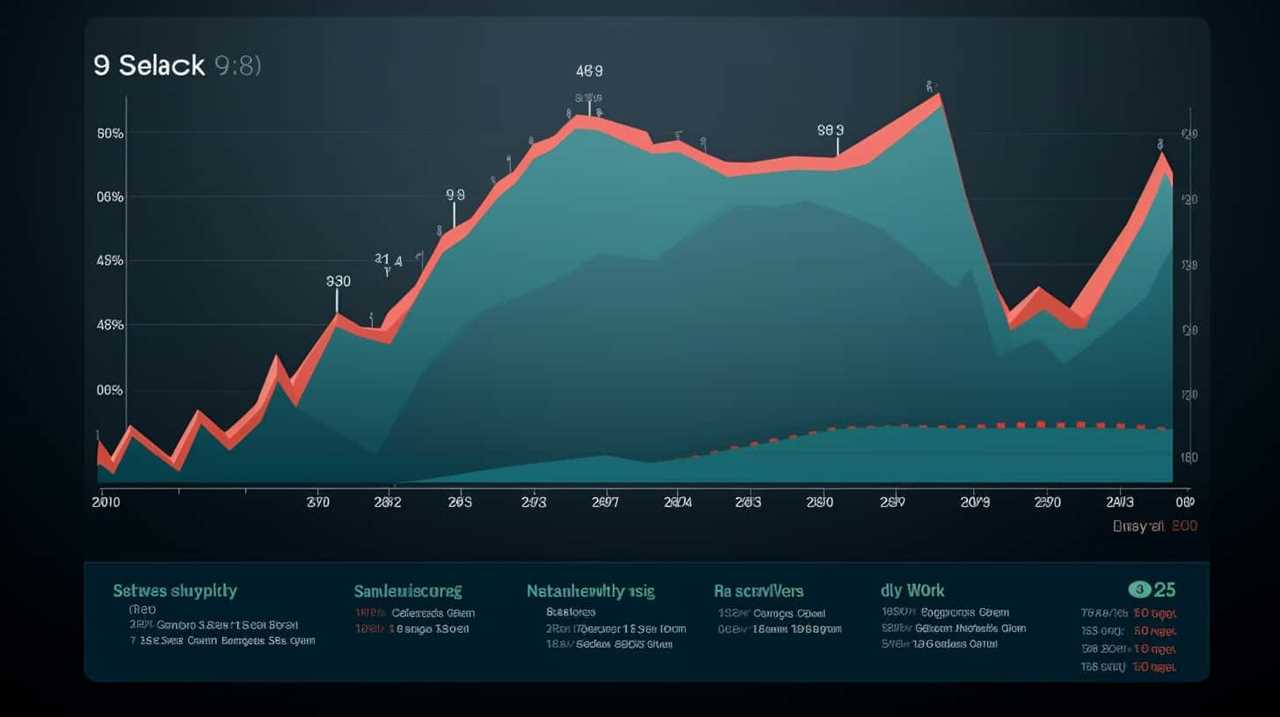As content creators, we recognize the power of knowledge in attracting and retaining the interest of our audience.
In this article, we will share 15 proven ways to leverage your content knowledge and take your engagement to new heights.
From sharing valuable insights to creating in-depth guides and conducting original research, we’ll show you how to establish yourself as a go-to resource in your industry.
Get ready to unlock the secrets of engagement through expertise and master the art of captivating your audience.

Key Takeaways
- Sharing expertise and insights helps to keep the audience informed and up-to-date with emerging trends and industry predictions.
- Creating in-depth guides and tutorials establishes the author as a knowledgeable authority and provides comprehensive instructional content.
- Conducting and sharing original research deepens knowledge, establishes authority, and invites audience engagement.
- Fostering dialogue and critical thinking through thought-provoking pieces and presenting multiple viewpoints creates an environment for constructive discussions.
Share Valuable Insights and Industry Trends
To effectively engage with our audience, we can share valuable insights and industry trends by keeping them informed and up-to-date. By staying on top of emerging trends and industry predictions, we position ourselves as knowledgeable experts in our field. Our audience desires mastery, and it’s our responsibility to provide them with the latest information and analysis.
Through our content, we can offer valuable insights into the direction the industry is heading, helping our audience make informed decisions and stay ahead of the curve. By sharing our expertise in a concise, informative, and authoritative manner, we establish ourselves as trusted sources of information. This not only builds credibility but also fosters a sense of loyalty and engagement.
As we explore the next section on creating in-depth guides and tutorials, we’ll further enhance our audience’s knowledge and skills.
Create In-Depth Guides and Tutorials
When it comes to engaging our audience and showcasing our expertise, creating in-depth guides and tutorials is a powerful strategy.

By providing expertise-driven instructional content, we can establish ourselves as knowledgeable authorities in our field.
These comprehensive tutorial resources not only offer valuable information but also demonstrate our commitment to helping our audience succeed.
Expertise-Driven Instructional Content
As educators, we can engage learners by creating in-depth guides and tutorials that are driven by our expertise. By providing engaging content that showcases our subject matter expertise, we can effectively capture the attention of our audience and facilitate their learning process.
In-depth guides allow us to delve into the intricacies of a topic, providing learners with a comprehensive understanding. Tutorials, on the other hand, offer step-by-step instructions and demonstrations, enabling learners to apply their knowledge in practical ways.

When creating instructional content, it’s important to present information in a concise and informative manner, ensuring that learners can easily follow along and comprehend complex concepts.
Comprehensive Tutorial Resources
Creating comprehensive tutorial resources is an effective way for us to leverage our content knowledge and engage learners. By offering in-depth guides and tutorials, we provide learners with a wealth of information and interactive learning opportunities. These resources allow learners to delve deeper into a subject and gain a comprehensive understanding of the topic at hand.
With our expertise, we can create tutorials that are concise, informative, and authoritative, catering to an audience that desires mastery. Through interactive elements such as quizzes, interactive diagrams, and step-by-step instructions, learners can actively engage with the material and enhance their learning experience.
In-Depth Guide Creation
To build upon our comprehensive tutorial resources, we can further engage learners by creating in-depth guides and tutorials. These guides provide learners with a deep understanding of a specific topic, allowing them to master the subject matter.

One effective strategy for guide creation is guide optimization, where we focus on creating long-form content that’s comprehensive and detailed. This type of content not only provides valuable information to learners but also boosts our website’s SEO by increasing the time users spend on our site.
By offering in-depth guides and tutorials, we demonstrate our expertise and commitment to providing valuable content to our audience. This helps to establish our authority and credibility in the field.
Now, let’s explore how we can take our engagement to the next level by conducting and sharing original research.
Conduct and Share Original Research
When it comes to engaging our audience, conducting and sharing original research can have a powerful impact.

By undertaking research in our field of expertise, we not only deepen our knowledge but also provide valuable insights to our audience.
Sharing our research findings not only establishes us as authoritative voices but also invites our audience to engage with us on a deeper level as they learn from our expertise.
Research Impact on Engagement
Our original research findings have significantly impacted engagement within our field. By conducting and sharing original research, we have been able to develop effective engagement strategies that have yielded remarkable results. To illustrate the impact of our research on engagement, we have summarized our findings in the table below:
| Research Finding | Engagement Impact |
|---|---|
| Understanding customer behavior | Increased customer satisfaction and loyalty |
| Identifying market trends | Improved product development and market positioning |
| Analyzing competitor strategies | Enhanced competitive advantage and differentiation |
These research insights have allowed us to better understand our audience, make informed decisions, and create targeted engagement initiatives. As a result, we have experienced higher levels of engagement, increased brand recognition, and improved overall performance within our field. Now, let’s delve into how sharing our research findings has further amplified our impact on engagement.

Sharing Research Findings
We conduct and share original research to disseminate our findings and maximize our impact on engagement.
Sharing research findings is crucial for promoting scholarly articles and contributing to the knowledge base in our field.
By conducting our own research, we can uncover new insights and generate valuable data that can inform and advance our understanding of a particular topic.
Once we’ve collected and analyzed our findings, it’s essential to share them with the wider academic community.

This can be done through publishing scholarly articles in reputable journals, presenting at conferences, and participating in academic discussions.
Curate and Share Relevant Resources
As content experts, we can enhance engagement by curating and sharing relevant resources. By providing our audience with carefully curated resources, we demonstrate our expertise and add value to their learning experience.
Here are three ways we can engage our audience through curated resources:
- Create a curated resource list: Compile a list of the best books, articles, and websites in our industry, and share it with our audience. This will save them time and effort in finding reliable sources of information.
- Share industry updates: Stay updated on the latest trends and developments in our field, and regularly share this information with our audience. This demonstrates our commitment to staying current and helps our audience stay informed.
- Collaborate with other experts: Partner with other content experts in our industry to create curated resources together. This not only expands the reach of our content but also provides our audience with a diverse range of perspectives.
Write Thought-Provoking Opinion Pieces
When we write thought-provoking opinion pieces, we have the power to captivate readers with our unique insights, stimulating their critical thinking and fostering meaningful dialogue.

By sharing our perspective on a topic, we invite others to engage with our ideas, challenging their own beliefs and expanding their understanding.
Through thought-provoking opinion pieces, we can spark conversations that lead to deeper understanding and growth.
Captivating Readers With Insights
How can we effectively captivate readers with thought-provoking opinion pieces?
One key strategy is through captivating storytelling. By using vivid and engaging narratives, we can draw readers into our opinions, making them more relatable and memorable.

Another effective approach is to incorporate engaging case studies. Real-life examples and data-driven evidence can help support our opinions and make them more compelling to readers.
Additionally, providing unique insights and perspectives can capture readers’ attention and challenge their existing beliefs. By offering thought-provoking viewpoints and analysis, we can stimulate critical thinking and encourage readers to engage with our opinions on a deeper level.
Transitioning into the next section on stimulating critical thinking, let’s explore how we can further engage readers by encouraging them to question and analyze the information presented.
Stimulating Critical Thinking
One of the 15 ways to leverage content knowledge is by crafting thought-provoking opinion pieces that stimulate critical thinking. These pieces serve as critical thinking exercises, promoting analytical skills among readers. By presenting well-reasoned arguments and challenging commonly held beliefs, opinion pieces encourage readers to question their own assumptions and evaluate evidence objectively. They prompt readers to engage in deeper analysis, weigh different perspectives, and develop their own informed opinions.

To write thought-provoking opinion pieces, it’s crucial to provide compelling evidence, logical reasoning, and clear explanations. The language used should be concise, informative, and authoritative, catering to an audience that desires mastery in the subject matter. By incorporating relevant examples, real-life scenarios, and counterarguments, these opinion pieces push readers to think critically and consider various viewpoints.
Ultimately, the goal is to spark intellectual curiosity and foster a culture of critical thinking, where readers actively seek out diverse opinions, challenge their own beliefs, and develop well-rounded perspectives.
Fostering Meaningful Dialogue
To foster open dialogue and promote active engagement, we craft thought-provoking opinion pieces that challenge readers’ perspectives and encourage critical thinking. Our aim is to cultivate meaningful dialogue by presenting controversial topics and inviting readers to share their opinions.
Here are three ways we engage our audience:

- Presenting multiple viewpoints: We explore various sides of an issue to encourage readers to consider different perspectives and form their own opinions.
- Providing evidence-based arguments: We support our opinions with reliable data, research, and expert opinions to strengthen the credibility of our articles.
- Encouraging reader participation: We invite readers to share their thoughts and engage in constructive discussions through comments, polls, and interactive elements.
By fostering open dialogue, we create an environment where readers can engage with our content and with each other, leading to a deeper understanding and exchange of ideas.
As we strive to promote meaningful dialogue, we also recognize the value of collaborating with other experts in our field.
Collaborate With Other Experts in Your Field
We can enhance our expertise and foster engagement by actively collaborating with other experts in our field. Collaborative projects and knowledge exchange with fellow experts provide invaluable opportunities to learn and grow. By working together, we can tap into a wealth of knowledge, perspectives, and experiences that can enrich our understanding and expand our skills. Here is a table that highlights the benefits of collaborating with other experts:
| Benefits of Collaboration |
|---|
| 1. Access to diverse expertise |
| 2. Increased innovation and creativity |
| 3. Expanded network and professional connections |
| 4. Opportunities for mutual learning and growth |
Collaboration with other experts not only strengthens our own expertise but also contributes to the advancement of the field as a whole. In the next section, we will offer practical tips and actionable advice on how to effectively collaborate with other experts in your field.

Offer Practical Tips and Actionable Advice
Continuing to foster engagement through expertise, it’s essential to offer practical tips and actionable advice that can empower us to effectively collaborate with other experts in our field.
To engage our audience, we can provide them with the following:
- Practical strategies: Share specific approaches and methods that have been proven to work in our field. This can include step-by-step guides, frameworks, or checklists that experts can easily implement.
- Actionable tactics: Offer specific tactics that experts can put into action right away. These can be small, actionable steps that can lead to big results, such as tips for improving productivity or ways to streamline processes.
- Real-life examples: Provide case studies or examples of how experts have successfully applied the strategies and tactics. This helps our audience understand the practicality and effectiveness of the advice.
By offering practical tips and actionable advice, we can empower experts to enhance their collaboration skills and achieve greater success in their field.
Now, let’s explore another effective way to engage our audience: hosting webinars or live Q&A sessions.

Host Webinars or Live Q&A Sessions
One effective way to engage our audience and foster collaboration is by hosting webinars or live Q&A sessions.
These interactive workshops allow us to connect directly with our audience, providing them with the opportunity to ask questions, seek clarification, and engage in meaningful discussions.
By hosting webinars or live Q&A sessions, we can share our expertise in a more personal and interactive manner, creating a sense of community and trust.
This not only enhances audience engagement but also promotes a deeper understanding of the content being discussed.

Participants can actively participate, contribute their insights, and feel a sense of ownership in the learning process.
Through these sessions, we can establish ourselves as credible authorities in our field and build lasting connections with our audience.
Showcase Real-Life Case Studies and Success Stories
To further engage our audience and demonstrate the practical application of our expertise, let’s delve into showcasing real-life case studies and success stories. This approach allows us to provide concrete examples of how our solutions have helped clients achieve their goals.
Here are three ways we can leverage customer testimonials and highlight client success stories:

- Share success stories: By featuring real-life examples of how our products or services have made a positive impact on our clients’ businesses, we can inspire others and build trust in our expertise.
- Provide detailed case studies: By presenting in-depth case studies that outline the challenges our clients faced, the solutions we implemented, and the results they achieved, we can showcase our problem-solving abilities and demonstrate our value.
- Include testimonials from satisfied customers: By incorporating testimonials from happy clients who’ve experienced success with our offerings, we can build credibility and show potential customers the tangible benefits they can expect.
Provide Expert Analysis and Commentary on Current Events
As experts in our field, we have the unique ability to provide real-time event insights and expert opinions on current events.
By sharing our analysis and commentary, we can engage our audience in meaningful discussions and offer valuable perspectives.
Our expertise allows us to offer a deeper understanding of the issues at hand and provide informed insights that can help shape the conversation around these events.
Real-Time Event Insights
We, as experts in our field, provide real-time event insights by offering expert analysis and commentary on current events. Through our deep knowledge and expertise, we engage with our audience by delivering timely and accurate information.

Here are three ways we provide valuable real-time event insights:
- Real-time event monitoring: By constantly monitoring events as they unfold, we stay up-to-date with the latest developments and trends. This allows us to offer immediate analysis and commentary, providing our audience with valuable insights in real-time.
- Event analytics: We utilize advanced analytics tools to gather and analyze data related to current events. This enables us to identify patterns, trends, and key insights, which we then translate into actionable information for our audience.
- Expert commentary: Our team of experts provides insightful commentary on current events, offering a unique perspective and analysis. We break down complex topics, provide context, and offer expert opinions, enabling our audience to gain a deeper understanding of the events at hand.
Expert Opinion Sharing
By offering our expert analysis and commentary on current events, we continue to engage our audience through our deep knowledge and expertise, providing valuable insights in real-time.
Expert opinion sharing is a powerful tool for fostering engagement and building credibility with our audience. Sharing our expert knowledge on important issues allows us to establish ourselves as trusted authorities in our field.
Our audience values our expertise and seeks our insights to gain a deeper understanding of current events. Through expert knowledge exchange, we can provide unique perspectives and analysis that go beyond what’s readily available.

By offering our expert opinions, we contribute to the ongoing conversations surrounding these events and provide our audience with valuable insights they can’t find elsewhere.
Our commitment to delivering timely and authoritative analysis ensures that our audience remains engaged and informed.
Create Interactive Quizzes or Assessments
To enhance engagement, we can develop interactive quizzes or assessments. These tools provide an opportunity for the audience to actively participate and test their understanding of the content.
Here are three ways to engage the audience through interactive quizzes or assessments:

- Create interactive polls and surveys: By incorporating polls and surveys into the content, we can gather valuable feedback and opinions from the audience. This not only encourages engagement but also allows us to tailor the content to their needs and preferences.
- Design engaging quizzes: Quizzes are an effective way to assess the audience’s knowledge and understanding. By designing quizzes that are challenging yet achievable, we can motivate the audience to actively engage with the content and strive for mastery.
- Develop assessments: Assessments provide a more comprehensive evaluation of the audience’s knowledge and skills. By designing assessments that cover various aspects of the content, we can encourage the audience to delve deeper into the subject matter and demonstrate their expertise.
Develop Engaging Infographics and Visual Content
As we delve further into enhancing engagement, let’s explore the power of developing engaging infographics and visual content. Infographics are an effective way to present complex information in a visually appealing and easily digestible format. They can help convey key messages, data, and statistics in a way that is visually stimulating and memorable. By incorporating well-designed infographics into your content strategy, you can capture your audience’s attention and keep them engaged.
To create impactful infographics, it is important to consider the principles of infographic design and visual content strategy. This involves choosing the right colors, fonts, and layout to effectively communicate your message. Additionally, using eye-catching visuals, such as icons, illustrations, and charts, can help make your infographics more engaging and informative.
Here is an example of how a table can be used to showcase information in a visually appealing way:
| Pros | Cons |
|---|---|
| Easy to understand | Time-consuming to create |
| Attention-grabbing | Requires design skills |
| Memorable | Limited space for text |
| Shareable on social media | May not be accessible for visually impaired |
| Enhances brand credibility | Requires regular updates |
Offer Exclusive Access to Premium Content or Resources
We can further enhance engagement by offering our audience exclusive access to premium content or resources. By providing exclusive content, we give our audience something valuable that they can’t find anywhere else. This creates a sense of exclusivity and makes them feel special, which in turn increases their engagement with our brand.

To engage our audience, we can offer:
- Exclusive articles or blog posts: Sharing in-depth, expert knowledge in written form allows our audience to dive deeper into specific topics and gain a deeper understanding.
- Premium video tutorials: Providing access to high-quality video tutorials allows our audience to learn new skills and techniques directly from experts.
- Exclusive downloadable resources: Offering downloadable resources such as e-books, templates, or guides provides our audience with practical tools they can use to enhance their mastery in a particular area.
Participate in Industry Events and Conferences
By attending industry events and conferences, we can further engage with our audience and deepen our expertise. These events provide valuable opportunities to participate in networking, connect with industry leaders, and stay updated on the latest trends and developments.
Attending workshops offered at these events allows us to acquire new skills and knowledge that can enhance our content creation and delivery. It also gives us the chance to share our expertise with others, through speaking engagements or panel discussions.
By actively participating in these events, we establish ourselves as thought leaders in our field and build credibility with our audience. The connections made at industry events can lead to collaborations, partnerships, and new business opportunities.

Establish Yourself as a Go-To Resource Through Consistent Content Creation
One effective way to establish ourselves as a go-to resource is through consistent content creation. By consistently producing high-quality content, we can establish authority in our field and build credibility with our audience. Here are three ways in which consistent content creation can help us achieve this:
- Demonstrate expertise: By consistently sharing valuable and insightful content, we can showcase our knowledge and expertise in a particular subject matter.
- Build trust: Regularly providing helpful and reliable information builds trust with our audience, showing them that we’re a reliable source of information.
- Stay top of mind: By consistently creating and sharing content, we can stay top of mind with our audience, ensuring that they come to us first when they have questions or need guidance.
Consistent content creation is a powerful tool for establishing authority and building credibility in our industry. It allows us to showcase our expertise, build trust, and stay top of mind with our audience, positioning us as the go-to resource in our field.
Frequently Asked Questions
How Can Participating in Industry Events and Conferences Help Establish Oneself as a Go-To Resource Through Consistent Content Creation?
Participating in industry events and conferences helps us build credibility and establish thought leadership. By consistently creating content based on our expertise, we position ourselves as go-to resources in the field.
What Are Some Examples of Premium Content or Resources That Can Be Offered as Exclusive Access?
Premium resources and exclusive access are valuable ways to engage our audience. Offering in-depth reports, webinars with industry experts, and exclusive interviews can establish our expertise and provide a deeper level of knowledge to our audience.

How Can Hosting Webinars or Live Q&A Sessions Contribute to Engagement Through Expertise?
Hosting webinars and live Q&A sessions allows us to share our expertise in real-time, engage with our audience, and provide valuable insights. These interactive platforms enhance learning, foster connection, and establish us as authorities in our field.
What Are Some Effective Ways to Curate and Share Relevant Resources?
To effectively curate and share relevant resources, we utilize platforms like social media and email newsletters. By curating high-quality content and sharing it with our audience, we provide valuable information and establish ourselves as experts in our field.
How Can Collaborating With Other Experts in Your Field Enhance Engagement Through Expertise?
Collaborating with other experts in our field enhances engagement through expertise by fostering collaborative projects and facilitating knowledge exchange. By working together, we can tap into a wealth of collective knowledge and create more impactful and comprehensive content.
Conclusion
In the ever-evolving world of content creation, leveraging our expertise is key to engaging with our audience. By sharing valuable insights, conducting original research, and developing thought-provoking content, we establish ourselves as a go-to resource.

Through in-depth guides, engaging visual content, and exclusive access to premium resources, we keep our audience interested and informed.
Let’s continue to harness the power of our knowledge to create content that captivates and educates.









